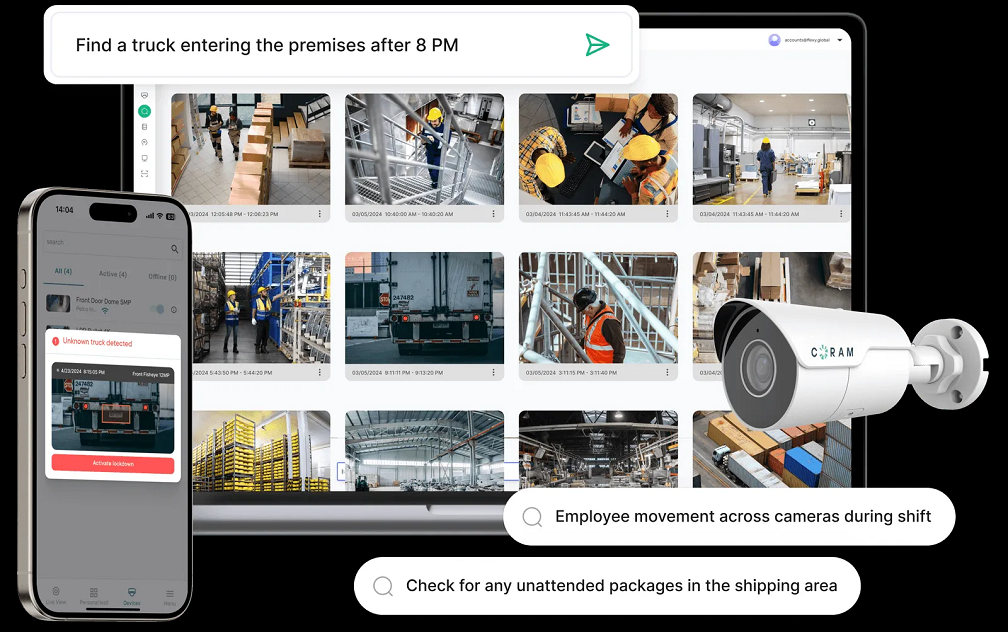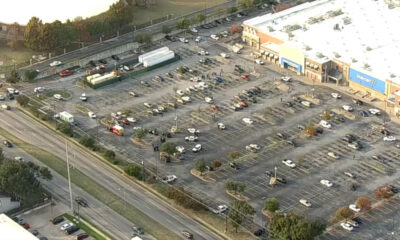Reviews
How AI-Powered Cameras Are Changing Warehouse Security

Did you know? Warehouses experience an average of $70 billion in inventory shrinkage globally each year, with theft, administrative errors, and vendor fraud being the main culprits (NRF, 2024).
These aren’t standard CCTV setups. We’re talking about systems capable of detecting anomalies in real time, recognizing faces, identifying behavior, and sending alerts all without intervention.
In this guide, you’ll learn how AI-powered cameras are transforming warehouse security, reducing theft, improving efficiency, and updating logistics infrastructures. If you’re considering upgrading your warehouse security system, Coram offers integrated solutions that align with these advancements.
Why Warehouse Security Fails
Traditional warehouse security systems are reactive, not proactive.
- Blind Spots: Static cameras often miss areas
- Monitoring Fatigue: Personnel can’t catch every anomaly
- Delayed Response: By the time someone sees something suspicious, it’s often too late
- Lack of Data: Old systems rarely provide insights
AI-powered systems provide 24/7 surveillance with analytics.
Advantages of AI-Powered Cameras in Warehouses
1. Real-Time Threat Detection
AI cameras use vision and machine learning to analyze data. They can:
- Detect personnel in zones
- Spot loitering or movement patterns
- Identify fire risks like smoke or equipment
- Recognize weapons or behavior
2. Facial Recognition and Access Control
AI systems can match faces against databases in milliseconds. Benefits include:
- Preventing access
- Time-stamping entries and exits
- Replacing ID cards or fobs
3. Incident Alerts and Escalation
AI systems can:
- Send alerts to smartphones or centers
- Escalate incidents to law enforcement
4. Inventory Protection and Asset Tracking
AI can monitor:
- Goods
- Loading/unloading patterns
- Movement of pallets or forklifts
This reduces theft and improves visibility.
5. Security Optimization
AI systems log events, detect trends, and offer suggestions:
- Adding cameras in locations
- Increasing security during shifts
- Identifying patterns in theft or damage
Use Cases: AI Cameras in Action
| Use Case | AI Application | Outcome |
| Theft Prevention | Analytics & facial recognition | 35% drop in employee-related thefts |
| Fire Hazard Detection | Thermal imaging & smoke detection | 50% faster incident response times |
| Access Control | Biometric verification | Reduced tailgating incidents by 70% |
| Perimeter Protection | Motion detection with geofencing | 24/7 alerts on intrusions |
AI Camera Features That Matter
When choosing an AI camera system, prioritize:
- Edge Computing: For faster processing
- Night Vision + IR Sensors: For dark corners
- Object Recognition: Distinguishes between people, machines, and products
- Cloud Integration: Enables access and monitoring
- Behavioral Analytics: Detects patterns over time
Brands Leading the AI Camera Shift
Some of the names in AI surveillance for warehouses:
- Coram
- Verkada
- Avigilon
- Axis Communications
- Hikvision
Each offers cameras, dashboards, and analytics.
How to Integrate AI Cameras into Your Warehouse
Step 1: Assess Security Gaps
Audit your setup. Identify:
- Blind spots
- Entry/exit vulnerabilities
- Areas with incidents
Step 2: Choose an AI System
Select a solution with:
- Scalable architecture
- High-definition cameras
- Alert systems
Step 3: Implement and Train
- Work with installers
- Train your team on the dashboard
- Set alerts and protocols
Step 4: Monitor and Optimize
- Review analytics
- Adjust camera placements or thresholds
- Use data for measures
The Future of Warehouse Surveillance
AI is just the beginning. Here’s what’s next:
- Integration with Drones: For aerial surveillance
- Predictive Analytics: Using data to forecast risks
- AI + IoT Fusion: Combining sensors with video
- Autonomous Patrol Bots: Robots that patrol and stream footage
Warehouses will shift from “monitored” to “self-securing” ecosystems.
Key Takeaways
- AI-powered cameras offer surveillance, threat detection, and analytics
- They’re reducing theft and blind spots
- Systems combine facial recognition, analysis, and integration
- Implementation requires assessment, tech, and optimization
- Future developments promise autonomous security ecosystems
FAQs
Are AI cameras expensive to install in warehouses?
Initial costs may be higher than CCTV, but the ROI from reduced theft, downtime, and labor makes them cost-effective.
Do AI cameras work in low-light or dark conditions?
Yes. Many models include night vision, IR sensors, and thermal imaging.
Can AI cameras integrate with warehouse management systems?
Yes. Many AI systems offer APIs or integrations with ERP and WMS platforms.
Are there privacy concerns with facial recognition?
Yes. It’s important to comply with regulations and inform employees about surveillance.
Bottom Line:
AI-powered cameras are not just a trend, they’re the standard for warehouse security. Businesses that embrace this technology will enjoy tighter security, smarter operations, and an edge over competitors.

-

 World3 days ago
World3 days agoEthiopian volcano erupts for first time in thousands of years
-

 Legal1 week ago
Legal1 week agoMichigan man JD Vance sentenced to 2 years for threatening Trump and JD Vance
-

 Legal1 week ago
Legal1 week agoWoman in critical condition after being set on fire on Chicago train
-

 World1 week ago
World1 week agoHurricane Melissa registered 252 mph wind gust, breaking global record
-

 Legal6 days ago
Legal6 days agoSuspect in San Diego stabbing shot by authorities after fleeing into Mexico
-

 Legal1 week ago
Legal1 week ago1 dead, 2 injured in shooting at Dallas Walmart parking lot
-

 Health6 days ago
Health6 days agoMarburg virus outbreak in Ethiopia grows to 6 confirmed cases
-

 Legal5 hours ago
Legal5 hours agoUtah Amber Alert: Jessika Francisco abducted by sex offender in Ogden




